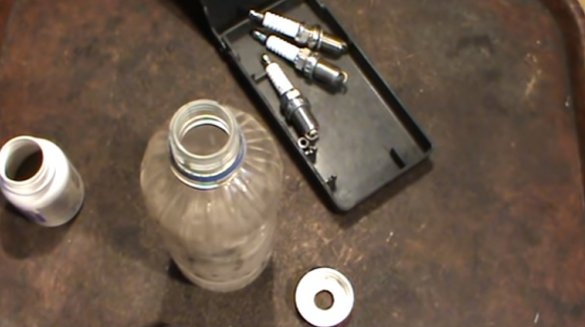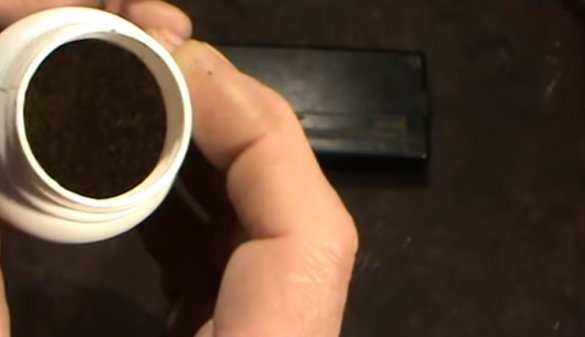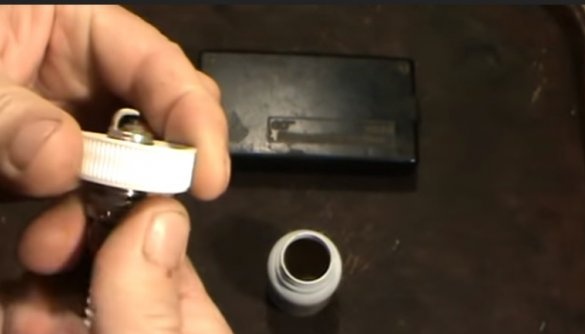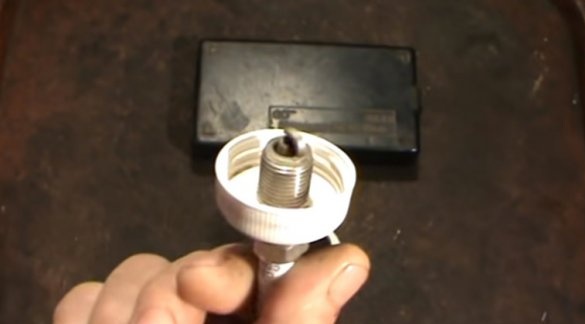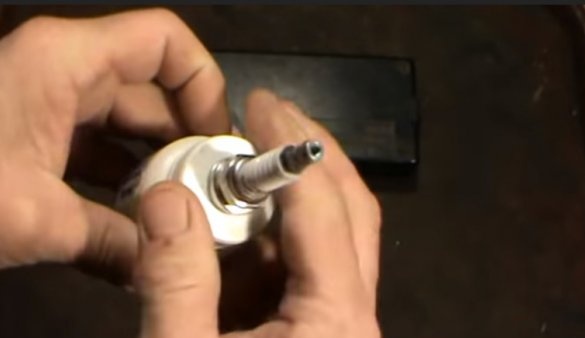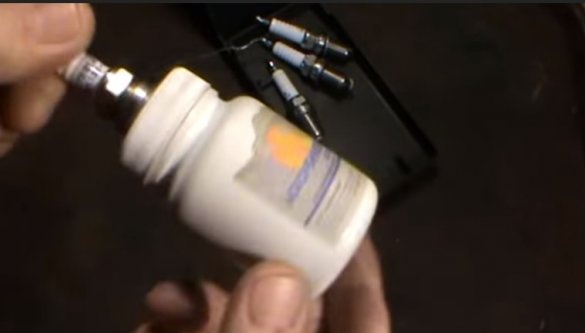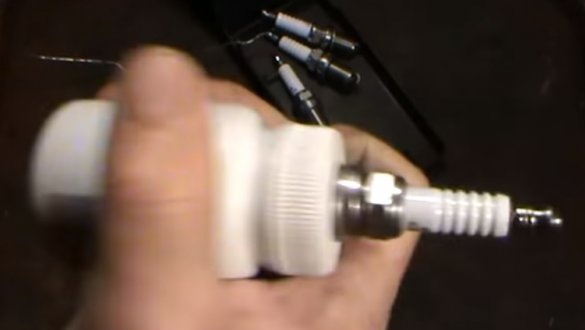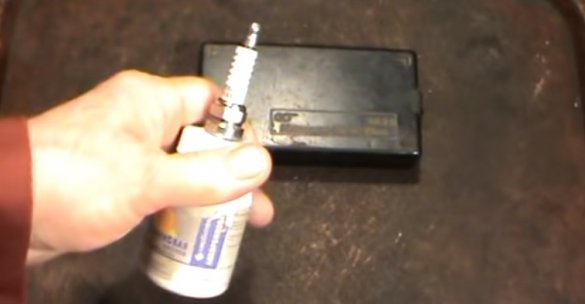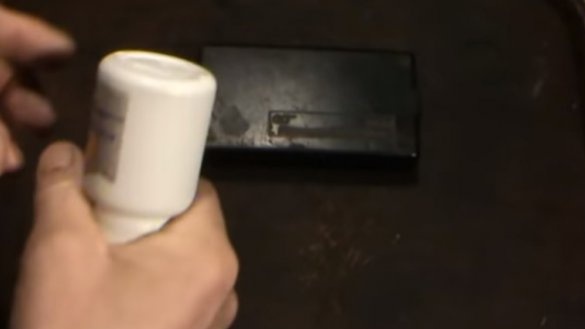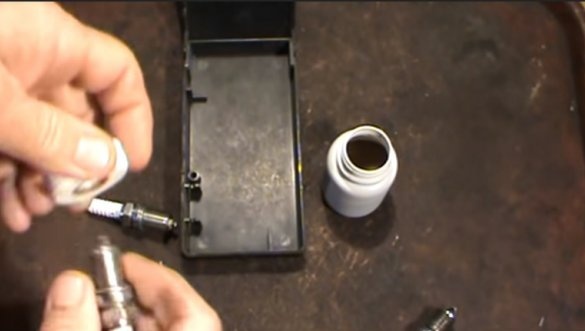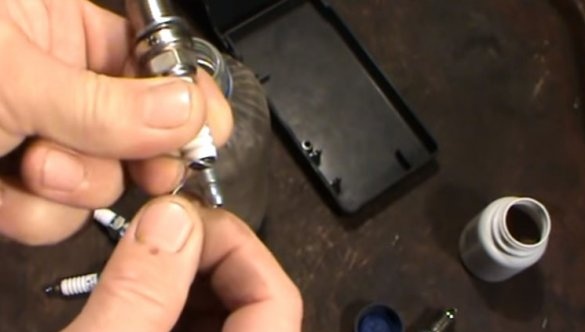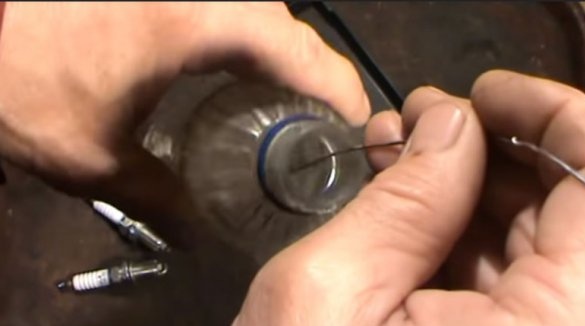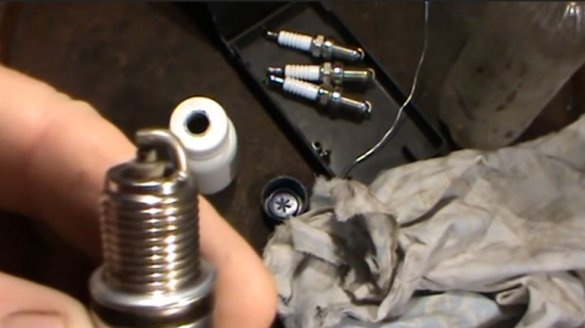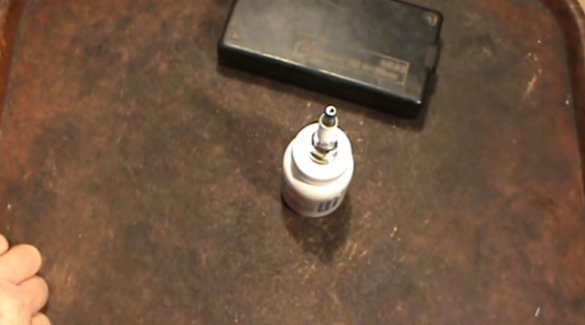To do this, you will need:
1. Dry and clean fine sand. It is better to use the river one, since there are practically no particles of clay and soil in it, and you can make it dry by simply calcining in the oven.
2. A solvent such as acetone.
3. A small plastic jar with a screw cap. In the center of the lid, you need to make a hole into which you can screw the thread of the candle without a gap.
Carbon from the surface of the spark plug using such a jar device is cleaned as follows:
1. Fill with dry sand about half the volume of the jar.
2. Screw the thread of the candle electrode into the hole in the can lid until it stops in the o-ring.
3. Screw the lid tightly with the candle mounted on it onto the neck of the can.
4. With sharp movements, rotating in different directions and shaking this design (approximately the way bartenders work with a shaker), clean the candle from soot with sand in the bank. In order for it to clean efficiently, it is recommended to rotate and shake the jar from 5 to 10 minutes.
5. Remove the lid from the neck of the can and unscrew the spark plug from it.
6. Attach a wire to the candle and, holding it, wash the candle in a container with solvent. This is necessary in order to wash off sand dust from the sand treated surface of the candle.
7. Traces of soot on the spark plug, removed from the solvent and rubbed with a dry cloth, are completely absent, and the surface of its insulator and thread looks clean and bright.
Here is such a simple way to clean car ignition from carbon deposits and other contaminants. Its additional advantage over sandblasting is the absence of microscopic scratches on the treated surface, which, when the candles are further used, become "attracting" soot foci.The only important condition for its use is that the sand and the surface of the spark plug must be dry before cleaning, otherwise it will not clean the spark plug, but simply stick to it.
The idea of this method in Soviet times was proposed to readers by the editors of the magazine “Behind the Wheel”, and this publication in those days did not publish recommendations whose practical value has not been proved.
A detailed video on cleaning the spark plug electrode from carbon deposits:


